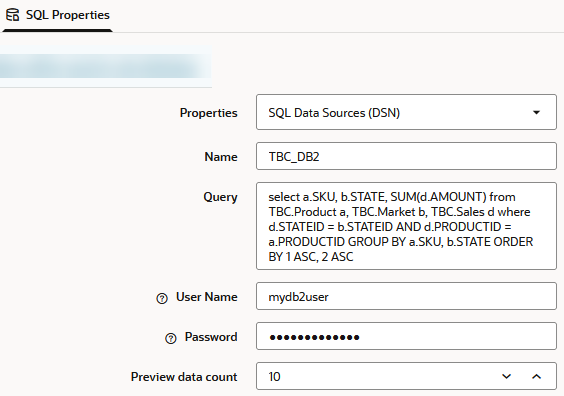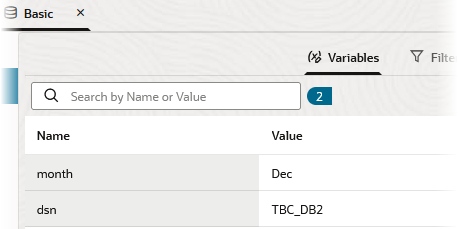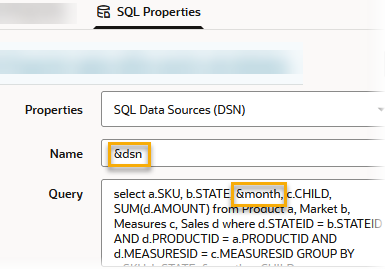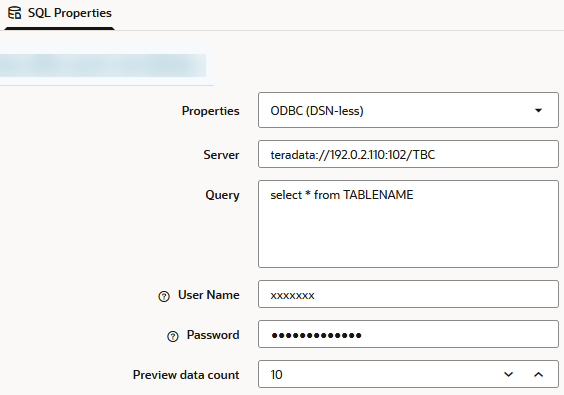Customize the Rule File for an ODBC Source of Data
If your source data is network accessible and configured using ODBC, you can configure Essbase rules to access the source data using SQL query results.
Example 1 - DB2
Here is an example of the SQL Properties for a load rule for accessing a relational source of data in DB2 that is not defined as Datasource in Essbase.
The Name field must match the DSN name defined in odbc.ini (Linux), or the Data Source Name configured in Windows. A SQL query you write pulls the data from DB2 to Essbase.

If you want to use one load rule for more than one ODBC source of data, you can use a substitution variable for the DSN name (and for elements in SQL clauses). For example, if the &dsn and &month variables are defined in the cube associated with the rule file,

then the load rule can reference these variables, as shown in the following rule example:

Example 2 - Teradata
Here is an example of the SQL Properties for a load rule for accessing a relational source of data in Teradata.

odbc.ini (on Linux):[Teradata]
Driver=/opt/teradata/client/16.20/lib64/tdataodbc_sb64.so
Description=NCR 3600 running Teradata V2R6.2
DBCName=192.0.2.110
astUser=
Username=xxxxxx
Password=xxxxxx
Database=TBC
DefaultDatabase=TBC
NoScan=no
MechanismName=TD2
Here is another example of the SQL Properties for a load rule for accessing a relational source of data in Teradata.

The example above corresponds to this configuration in odbc.ini (on Linux):
[$TELAPI$192.0.2.110]
Driver=/opt/teradata/client/16.20/lib64/tdataodbc_sb64.so
Description=NCR 3600 running Teradata V2R6.2
DBCName=192.0.2.110
astUser=
Username=xxxxxx
Password=xxxxxx
Database=TBC
DefaultDatabase=TBC
NoScan=no
MechanismName=TD2